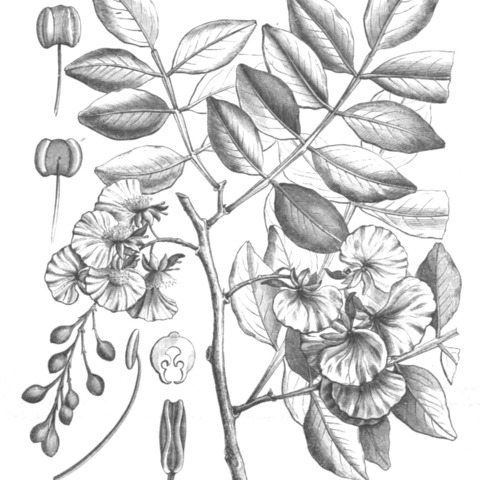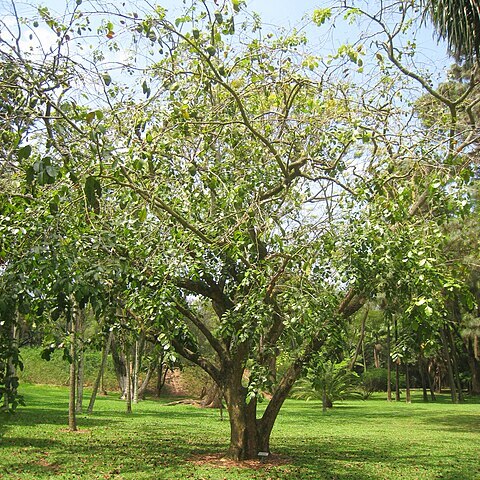Small trees, usually glabrous and with 1-to 5-foliolate leaves (in Panama). Smaller branches usually conspicuously lenticellate. Leaves monofoliolate or pin-nate, stipulate, with petiole and rachis (if present) usually obsagittate-alate or at least angled; leaflets ovate to elliptic, membranaceous to coriaceous, prominently veined, with principal lateral veins anastomosing towards the margin; petiolules (in Panama) short and terete. Inflorescence few-to many-flowered, bracteate; buds diagnostic, clavate-pedicellate, globose, entire and (calyx) rupturing into 3-5 irregular sections at anthesis. Flower apetalous or 1-petalate, petal usually large and suborbicular, clawed; stamens usually many, generally of two sorts, fewer (less than 15) larger and longer ones ventrally, with many smaller and somewhat shorter ones above; anthers versatile, with conspicuous connective. Legume 1-to few-seeded, short or elongate, subterete to flattened.
Stamens many (more than 30), in several series; filaments free or almost so; anthers affixed near the base, dehiscing by longitudinal slits; connective not glandular.
Inflorescence of lateral racemes or sometimes the flowers in panicles or fascicles, or apparently solitary in leaf axils.
Leaves imparipinnate or (in South America only) 1–3-foliolate; leaflets opposite or alternate; stipules small.
Pods coriaceous or woody, generally elongate, indehiscent or dehiscing into two valves, 1–several-seeded.
Seeds arillate or not, with or without endosperm, the embryo with the radicle curved or straight.
Ovary on a long gynophore, with several to many ovules; stigma small, rarely capitate.
Receptacle inconspicuous; calyx globose or ellipsoid and entire before dehiscence.
Petals 1, or (not in the Flora area) 0 or 3.
Unarmed trees or rarely shrubs.
Flowers hermaphrodite.


